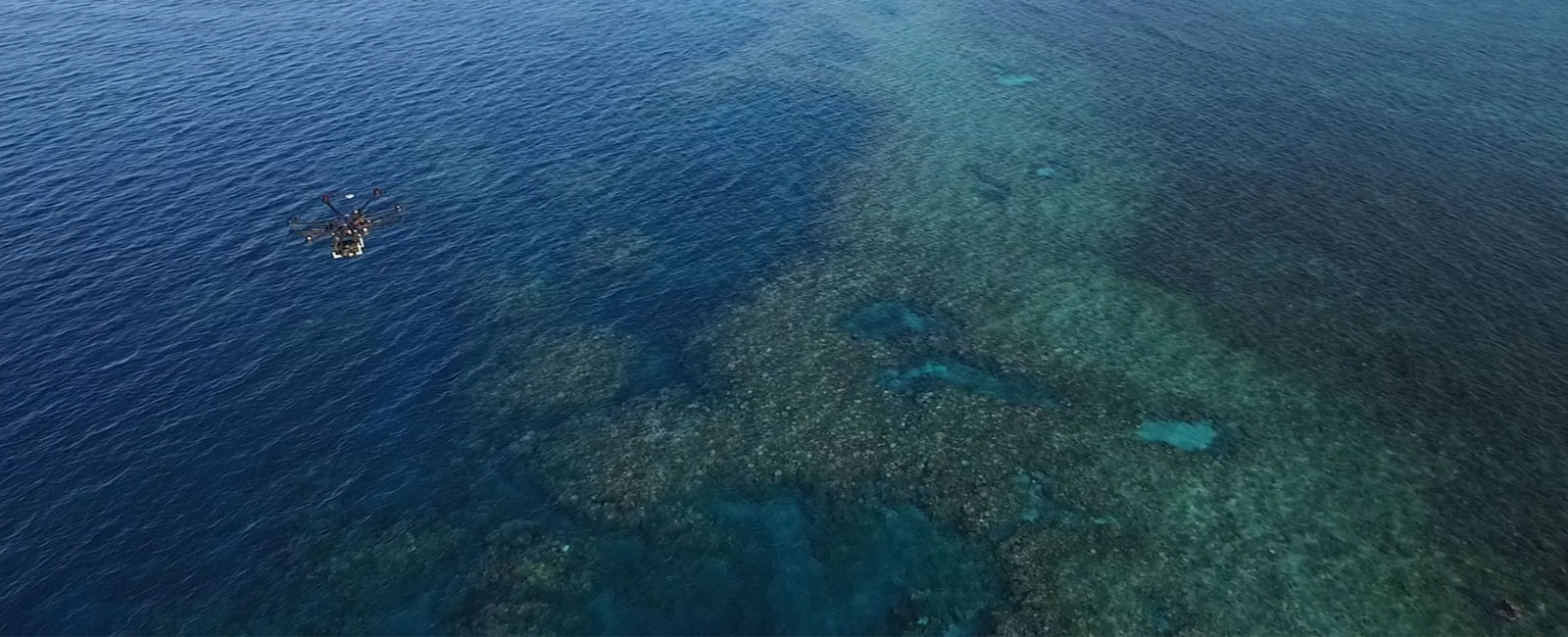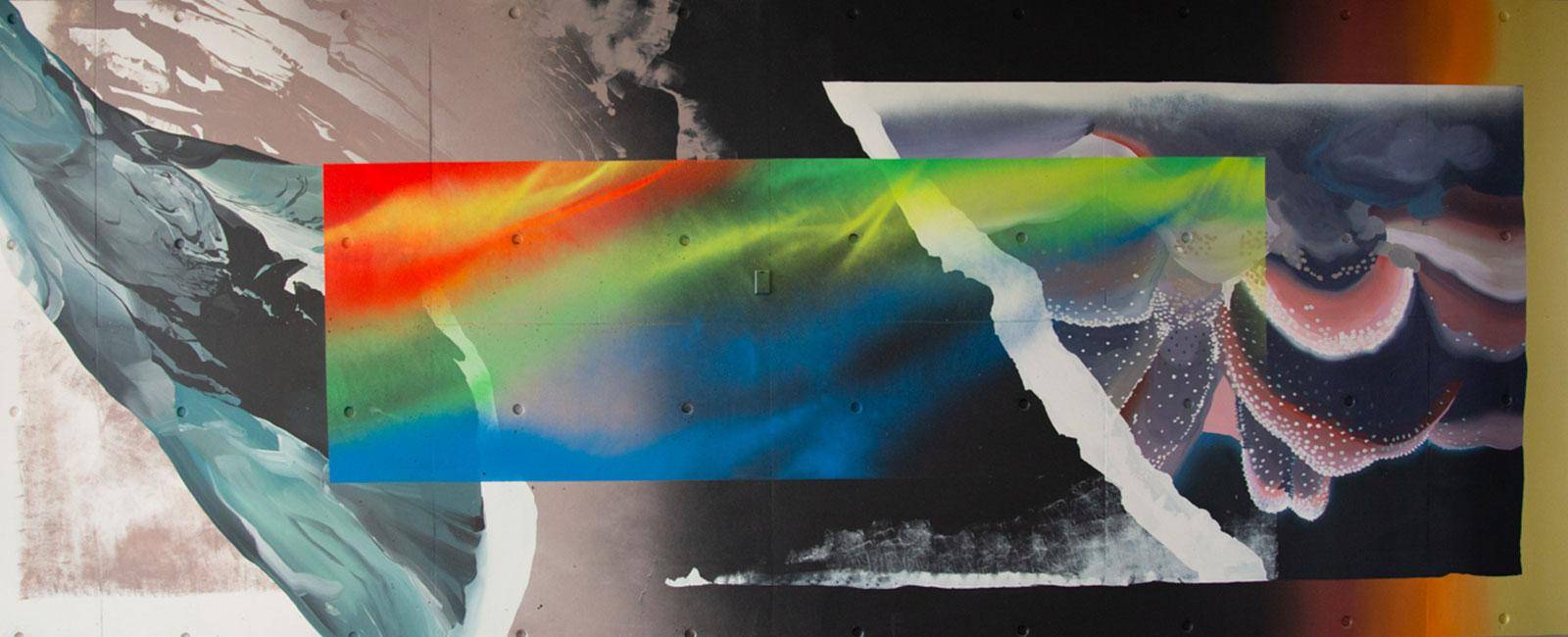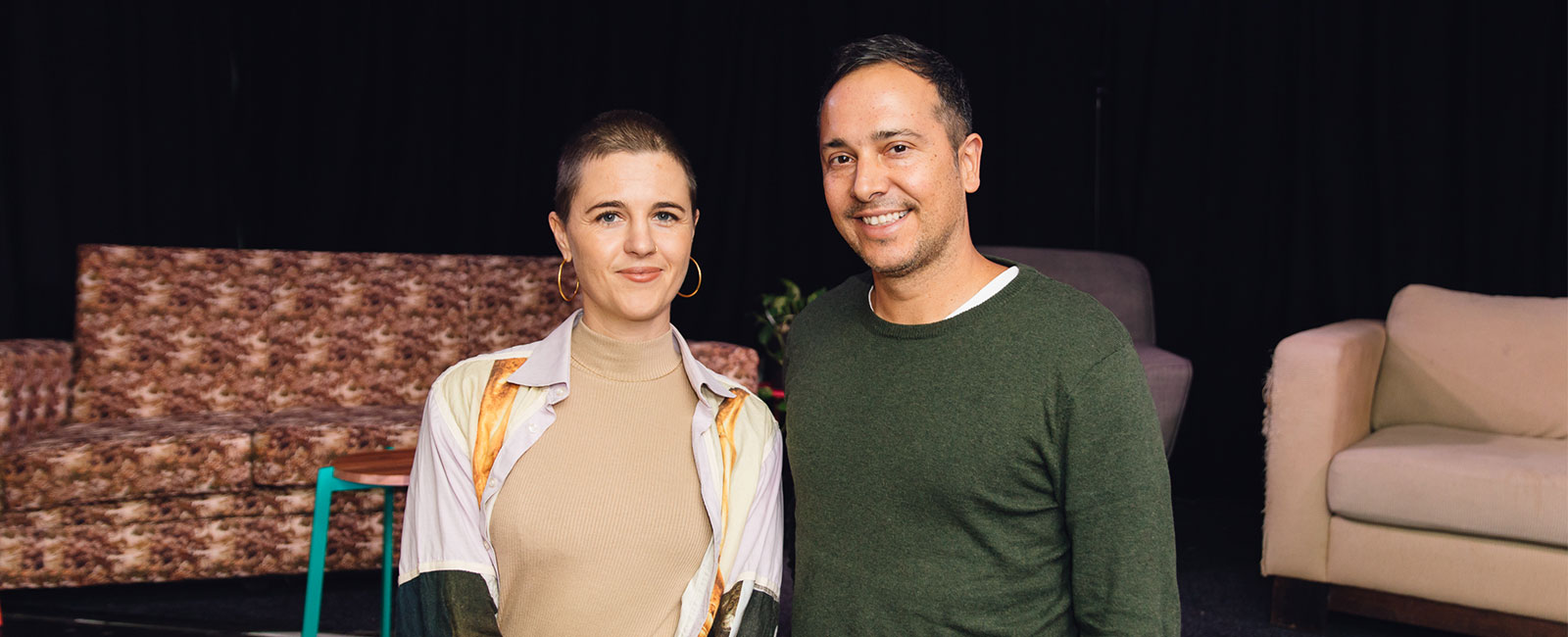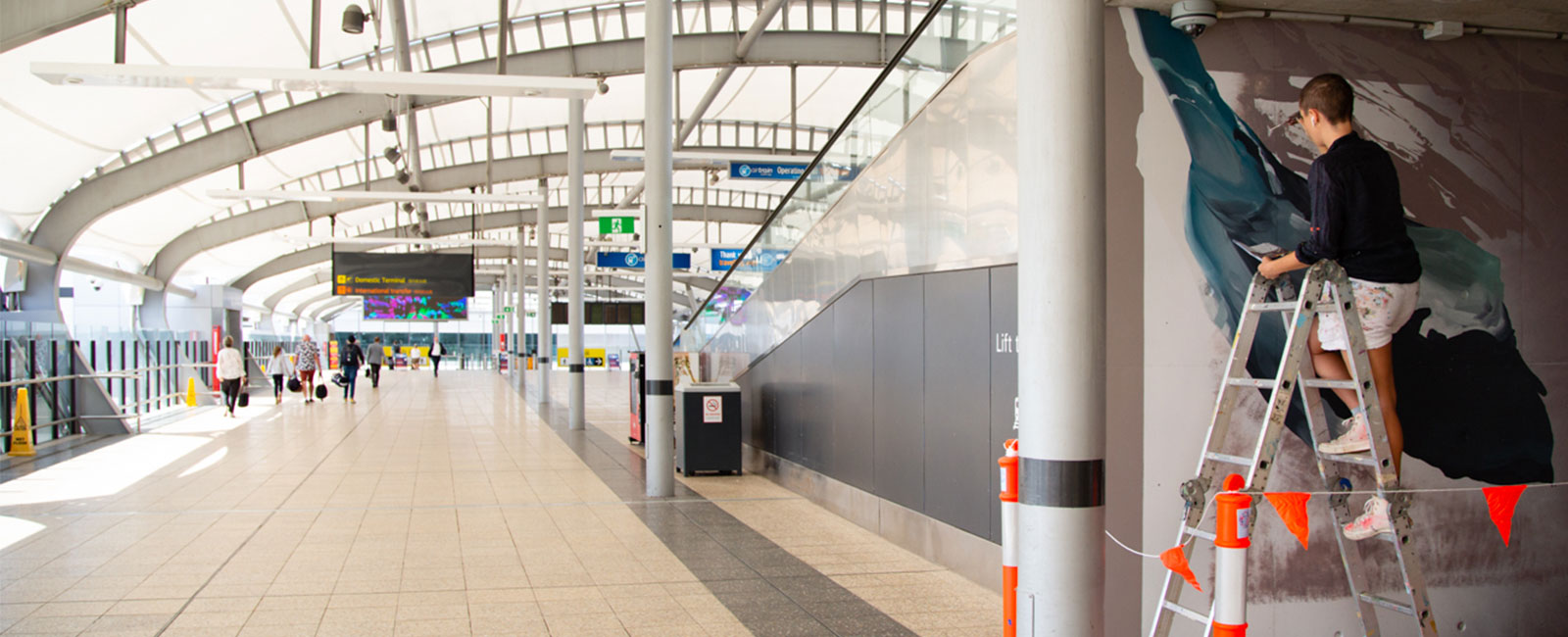
It’s hard to miss the vibrant mural that has recently been created at Brisbane Airport’s Domestic Terminal. But did you know that there is much more to the ‘Visualising AI’ mural than meets the (human) eye?
The mural is the outcome of a ground-breaking collaboration between Meanjin-based (Brisbane) artist Emily Devers and Associate Professor Felipe Gonzalez from the Queensland University of Technology (QUT).
Emily was invited by the Brisbane Street Art Festival (BSAF) and the QLD AI Hub to develop an artwork that presents how AI can influence the way we experience our surroundings.
“I love that through festivals like Brisbane Street Art Festival, artists are able to explore concepts with full freedom of expression - away from the negotiations of client work,” Emily said.
“It's also a wonderful opportunity to contribute to Brisbane's growing outdoor gallery and communicate concepts that feel important to share with the public.”
In the case of the ‘Visualising AI’ mural, that important concept is the understanding and protection of the Great Barrier Reef.
This is a key focus for Associate Professor Gonzalez, who combines the power of artificial intelligence (AI) and aerial robots – aka drones or unmanned aerial vehicles (UAVs) – to better understand and protect precious environments.
Associate Professor Gonzalez knows that one of the greatest challenges in safeguarding the World Heritage-listed Great Barrier Reef is its size.
Stretching 2,300km along Queensland’s coast, and comprising 3,000 reefs, the Great Barrier Reef is home to one of the world’s most diverse ecosystems.
In ongoing research on the Great Barrier Reef, Associate Professor Gonzalez harnesses the power of AI to swiftly process data captured by drones fitted with specialised hyperspectral cameras, flown 60m above the reef.
While a standard camera detects images in three bands of the visible spectrum of red, green and blue, Associate Professor Gonzalez said a hyperspectral camera uses 270 bands of the visible and near-infrared spectrum – providing far more detail than the human eye can see.
“We’ve built an artificial intelligence system that processes the data by identifying and categorising the different ‘hyperspectral fingerprints’ for objects within the footage,” he said.
“Every object gives off a unique hyperspectral signature, like a fingerprint. The signature for sand is different to the signature for coral, and likewise, brain coral is different to soft coral. More importantly, an individual coral colony will give off different hyperspectral signatures as its bleaching level changes, so we can potentially track those changes in individual corals over time.”
Artist Emily Devers was inspired by her conversation with Associate Professor Gonzalez, with three key points standing out to her:
- “AI technology is critical in gathering data and processing information on how the threats of climate change show up in ecosystems such as the iconic Great Barrier Reef,
- AI technology boasts an efficient rate at gathering and processing data in comparison to humans (and therefore presents an incredible amount of potential), and
- AI technology still requires humans to develop, control, monitor and implement the research - so one cannot exist without the other.”
Emily explains that “These points highlight the ‘space between’ AI technology and humans; the grey area between our varying abilities. AI technology can gather high quality data, but not without the facilitation and control of humans. Humans can implement positive change, but not without high quality data.”
The resulting mural was created using a fusion of analogue and digital materials and processes. 35mm film, prints, paper and paint were used, as well as hyper-spectral imagery captured by Associate Professor Gonzalez, digital photos and digital manipulation.
“Depth is challenged, layers intersect, and it becomes impossible to decipher which elements are analogue and which are digital, recognising that they’re all working together in one cohesive arrangement with a mutual appreciation of one of our planet's most loved - and threatened - environments,” Emily explains.
For Associate Professor Gonzalez, the collaboration to ‘Visualise AI’ provides an important platform to demystify AI; translate vital research in an engaging way and, hopefully, raise public awareness about challenges facing precious environments.
“I think the artwork Emily has created at Brisbane Airport is fantastic, including incredible use of colours to represent an abstract concept of hyperspectral imagery, which is not common for the general public,” he said.
“I’m hoping its visualisation through Emily’s mural will create a little more consciousness in people around the challenges in the environment from a scientific point of view.”
Thinking about the location of the ‘Visualising AI’ mural at Brisbane Airport, Emily said:
“Typically airports are access points for how people experience the environment and generally if you are travelling to regional Australia, you’re going there to marvel at the natural environment."
"So, I thought it would be nice to present something there to stimulate a bit of deeper thought and promote some responsibility before boarding the plane. And when you do get to the Great Barrier Reef, it’s not about having an attitude of consumption, but more an attitude of appreciation and responsibility on how you can take care of it.”
Emily's thought-provoking mural is the latest addition to Brisbane Airport's artworks. It surprises some people to find out that the Airport has one of the largest collections of public art in Australia, outside of a gallery or museum. Significant pieces of art are displayed across the airport's public spaces, including both terminals and Skygate.
In fact, Emily’s association with Brisbane Airport extends further than the mural. Her studio is situated in an old brass foundry in Red Hill that was previously home to the group of artists who created the large floor mosaic in the International Terminal.
“There are still mirrors installed in the roof of the upstairs studio, which were originally installed so the artists could see the floor mosaic in its entirety while it was being planned and constructed - a nice connection to Brisbane airport history!”
A nice connection indeed!
HOW TO SEE THE MURAL
The ‘Visualising AI’ Mural is located at the Domestic Terminal on the Skywalk pedestrian overpass. It is under the escalators leading up to the Airtrain, directly opposite the Airtrain lift.
CREDITS
Feature image by: Sarah Whyte Photography
Find out more about the Brisbane Airport Art trail and explore the collection on your own self-guided tour.



